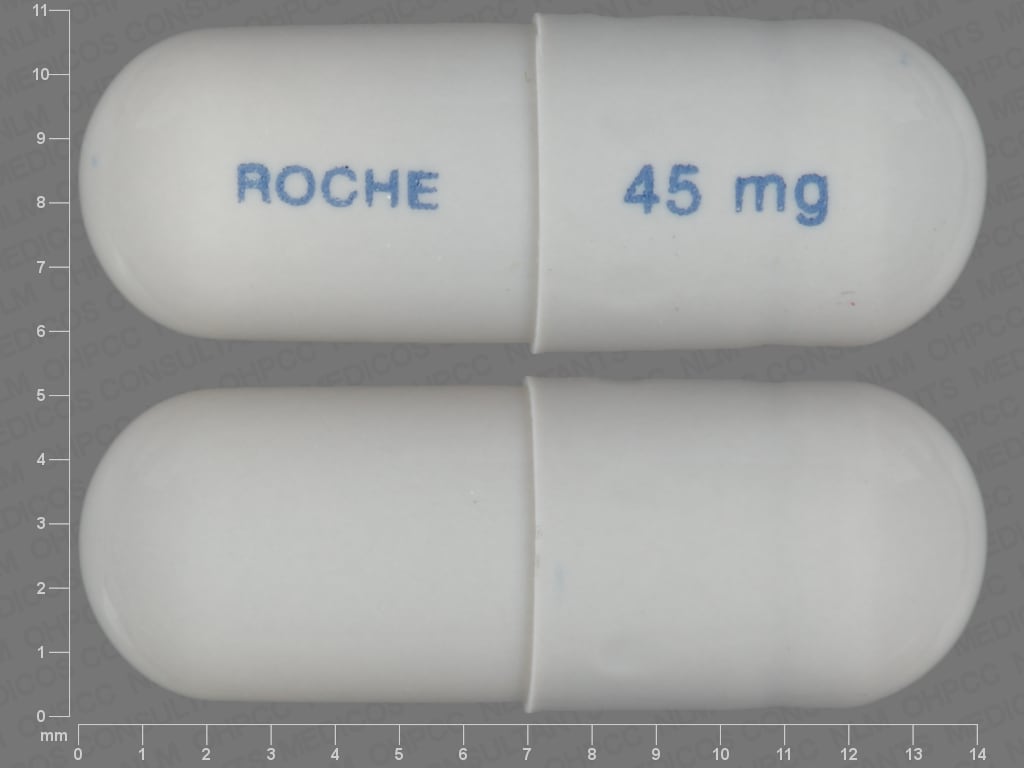What is Tamiflu?
Tamiflu is a prescription medicine used to:
- treat the flu (influenza) in people 2 weeks of age and older who have had flu symptoms for no more than two days.
- prevent the flu in people who are 1 year of age and older.
It is not known if Tamiflu is:
- effective in people who start treatment after 2 days of developing flu symptoms.
- effective for the treatment of the flu in people with long-time (chronic) heart problems or breathing problems.
- effective for the treatment or prevention of flu in people who have weakened immune systems (immunocompromised)
- safe and effective for the treatment of the flu in children less than 2 weeks of age.
- safe and effective in the prevention of the flu in children less than 1 year of age.
Tamiflu does not treat or prevent illness that is caused by infections other than the influenza virus.
Tamiflu does not prevent bacterial infections that may happen with the flu.
Tamiflu is not recommended for people with end-stage renal disease (ESRD) who are not receiving dialysis.
Tamiflu does not take the place of receiving a flu vaccination. Talk to your healthcare provider about when you should receive an annual flu vaccination.
Who should not take Tamiflu?
Do not take Tamiflu if you are allergic to oseltamivir phosphate or any of the ingredients in Tamiflu. See below for a complete list of ingredients in Tamiflu.
What should I tell my healthcare provider before taking Tamiflu?
Before you take Tamiflu, tell your healthcare provider if you:
- have problems swallowing Tamiflu capsules
- have kidney problems
- have a history of fructose (fruit sugar) intolerance. Tamiflu contains sorbitol and may cause stomach upset and diarrhea in people who are fructose intolerant.
- have any other medical conditions
- are pregnant or plan to become pregnant. Available information indicate that Tamiflu does not increase the risk of birth defects.
- are breastfeeding or plan to breastfeed. Tamiflu can pass into breast milk in small amounts.
Tell your healthcare provider about all the medicines you take, including prescription or over-the counter medicines, vitamins, and herbal supplements.
Know the medicines you take. Keep a list of them to show your healthcare provider and pharmacist when you get a new medicine.
How should I take Tamiflu?
- Take Tamiflu exactly as your healthcare provider tells you to.
- Take Tamiflu with food or without food. There is less chance of stomach upset if you take Tamiflu with food.
- If you miss a dose of Tamiflu, take it as soon as you remember. If it is 2 hours or less before your next dose, do not take the missed dose. Take your next dose of Tamiflu at your scheduled time. Do not take 2 doses at the same time.
- If Tamiflu for oral suspension is not available or you cannot swallow Tamiflu capsules, your healthcare provider or pharmacist may instruct you to open Tamiflu capsules and mix the capsules contents with sweetened liquids such as chocolate syrup (regular or sugar-free), corn syrup, caramel topping, or light brown sugar (dissolved in water).
- If your healthcare provider or pharmacist has instructed you to take Tamiflu for oral suspension or open your Tamiflu capsules, read the detailed Instructions for Use on the leaflet you receive with your medication. Ask your pharmacist if you have any questions.
What are the possible side effects of Tamiflu?
Tamiflu may cause serious side effects, including:
- Serious skin and allergic reactions. Tamiflu can cause serious skin and allergic reactions. Stop taking Tamiflu and get medical help right away if you get any of the following symptoms:
- skin rash or hives
- your skin blisters and peels
- blisters or sores in your mouth
- swelling of your face, eyes, lips, tongue, or throat
- trouble breathing
- itching
- chest pain or tightness
- Change in behavior. People, especially children, who have the flu, can develop nervous system problems and abnormal behavior that can lead to death. During treatment with Tamiflu, tell your healthcare provider right away if you or your child have confusion, speech problems, shaky movements, seizures, or start hearing voices or seeing things that are not really there (hallucinations).
The most common side effects of Tamiflu when used for treatment of the flu include nausea, vomiting, and headache.
The most common side effect of Tamiflu when used for prevention of the flu include, nausea, vomiting, headache, and pain.
Tell your healthcare provider if you have any side effect that bothers you or that does not go away.
These are not all of the possible side effects of Tamiflu.
Call your doctor for medical advice about side effects. You may report side effects to FDA at 1-800- FDA-1088.
Tamiflu Images
General information about the safe and effective use of Tamiflu
Medicines are sometimes prescribed for purposes other than those listed in a Patient Information guide. Do not use Tamiflu for a condition for which it was not prescribed. Do not give Tamiflu to other people, even if they have the same symptoms you have. It may harm them. If you would like more information, talk with your healthcare provider. You can ask your healthcare provider or pharmacist for information about Tamiflu that is written for health professionals. For more information, go to www.Tamiflu.com.
How should I store Tamiflu?
- Store Tamiflu capsules at room temperature between 68°F to 77°F (20°C to 25°C).
- Store Tamiflu for oral suspension in the refrigerator for up to 17 days between 36ºF to 46ºF (2ºC to 8ºC) Do not freeze.
- Store Tamiflu for oral suspension for up to 10 days at room temperature between 68°F to 77°F (20°C to 25°C).
- Safely throw away any unused Tamiflu that is out of date or no longer needed.
Keep Tamiflu and all medicines out of the reach of children.
What are the ingredients in Tamiflu?
Active ingredient: oseltamivir phosphate
Inactive ingredients:
Capsules: croscarmellose sodium, povidone K30, pregelatinized starch, sodium stearyl fumarate, and talc
- 30mg capsule shell: gelatin, red iron oxide, titanium dioxide, and yellow iron oxide
- 45mg capsules shell: black iron oxide, gelatin, and titanium dioxide
- 75mg capsules shell: black iron oxide, gelatin, red iron oxide, titanium dioxide, and yellow iron oxide
Oral suspension: monosodium citrate, saccharin sodium, sodium benzoate, sorbitol, titanium dioxide, tutti-frutti flavoring, and xanthan gum.
Instructions for use for Tamiflu
Tamiflu (TAM-ih-flew) (oseltamivir phosphate)
How do I give a dose of Tamiflu for oral suspension?
Step 1. Shake the Tamiflu for oral suspension bottle well before each use.
Step 2. Open the bottle by pushing downward on the child resistant bottle cap and twisting it in the direction of the arrow.
Step 3. Measure the oral suspension with an appropriate oral dosing dispenser to be sure you get the correct dose.
Contact your pharmacist if you do not have an appropriate oral dosing dispenser.
Step 4. Give the full contents of oral dosing dispenser directly into the mouth.
Step 5. Close the bottle with the child-resistant bottle cap after each use.
Step 6. Rinse oral dosing dispenser under running tap water and allow to air dry after each use.
How do I mix the contents of Tamiflu capsules with sweetened liquids, if directed by my healthcare provider or pharmacist?
You will need:
- the prescribed dose of Tamiflu capsules
- a small bowl
- sweetened liquid, such as chocolate syrup (regular or sugar-free), corn syrup, caramel topping, or light brown sugar (dissolved in water)
Step 1. Open the contents of the prescribed dose of Tamiflu capsules into a small bowl.
Step 2. Add a small amount of the sweetened liquid to the capsule contents.
Step 3. Stir the mixture and give the entire dose of Tamiflu.
Instructions for use revised 06/2016.





